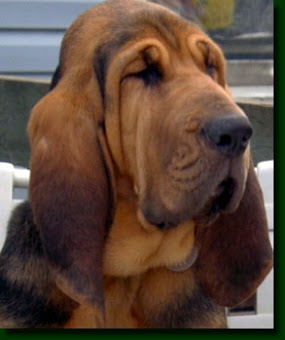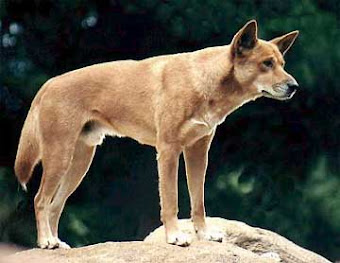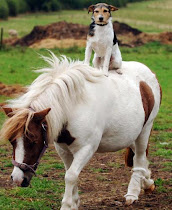 Beagle's are small to medium sized dogs. Which are my favorite kind of canine. Big dogs can be harder to handle and can cost a lot more to maintain and feed.
Beagle's are small to medium sized dogs. Which are my favorite kind of canine. Big dogs can be harder to handle and can cost a lot more to maintain and feed.Beagles have been around for what is said to be over 2,000 years but the more modern breed, came from Britain around the 1830's including the Talbot Hound,the North Country Beagle,the Southern Hound and possibly the Harrier.
Beagles are intelligent, but as a result of being bred for the long chase are single-minded and determined, which can make them hard to train. They are generally obedient but can be difficult to recall once they have picked up a scent and are easily distracted by smells around them. They do not generally feature in obedience trials; while they are alert, respond well to food-reward training, and are eager to please, they are easily bored or distracted.
Although Beagles are bred for hunting, Beagles are versatile and are nowadays employed for various other roles in detection, therapy, and as family pets as well.
Beagles are used as sniffer dogs for termite detection in Australia and have been mentioned as possible candidates for drug and explosive detection.
Because of their gentle nature and unimposing build, they are also frequently used in pet therapy visiting the sick and elderly in hospitals. In June 2006, a trained Beagle assistance dog was credited with saving the life of its owner after using his owner's mobile phone to dial an emergency number! In the aftermath of the 2010 Haiti Earthquake a Beagle search and rescue dog with a Colombian rescue squad was credited with locating the owner of the Hotel Montana who was subsequently rescued after spending 100 hours buried in the rubble.
Beagles have an expectancy of 12-15 years which is typical for a dog it's size.
Regulate what you feed a Beagle for it will eat as much as it can handle and can cause health problems and become overweight.
Beagles may be prone to epilepsy(which can be controlled with the right meds), Hypothyroidism, hip dysplasia, immune mediated polygenic arthritis(which can be fixed with steroids).
Their long floppy ears can mean that the inner ear does not receive a substantial air flow and the moist air may become trapped. This can lead to ear infections for other dogs with the same long floppy ears. Beagles may also be affected by a range of eye problems; two common ophthalmic conditions in Beagles are glaucoma and corneal dystrophy. "Cherry eye", a prolapse of the gland of the third eyelid and distichiasis, a condition in which eyelashes grow into the eye causing irritation, sometimes exist; both these conditions can be corrected with surgery. They can suffer from several types of retinal atrophy. Failure of the nasolacrimal drainage system can cause dry eye or leakage of tears onto the face.
Beagles may exhibit a behavior known as reverse sneezing, in which they sound as if they are choking or gasping for breath, but are actually drawing air in through the mouth and nose. The exact cause of this behavior is not known, but it is not harmful to the dog.
The Beagle has an even temper and gentle disposition. Described in several breed standards as being "merry", they are amiable and generally neither aggressive nor timid. They enjoy company, and although they may initially be standoffish with strangers, they are easily won over.
Beagles are excellent with children and this is one of the reasons they have become popular family pets, but they are pack animals, and can be prone to separation anxiety.
Alongside the Bloodhound, the Beagle has one of the best developed senses of smell compared to any dog. In the 1950s, John Paul Scott and John Fuller began a 13 year study into canine behavior. As part of this research, they tested the scenting abilities of various breeds by putting a mouse in a 1-acre (4,000 m2) field and timing how long it took the dogs to find it. The Beagles found it in less than a minute, while Fox Terriers took 15 minutes and Scottish Terriers failed to find it at all. Beagles are better at ground-scenting (following a trail on the ground) than they are at air-scenting, and for this reason they have been excluded from most mountain rescue teams in favor of collies, which use sight in addition to air-scenting and are more biddable. The long ears and large lips of the Beagle probably assist in trapping the scents close to the nose.
















I always wanted a Beagle, thanks for the tips I think I just might buy one!
ReplyDelete